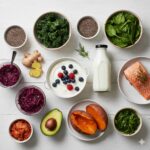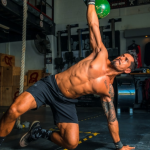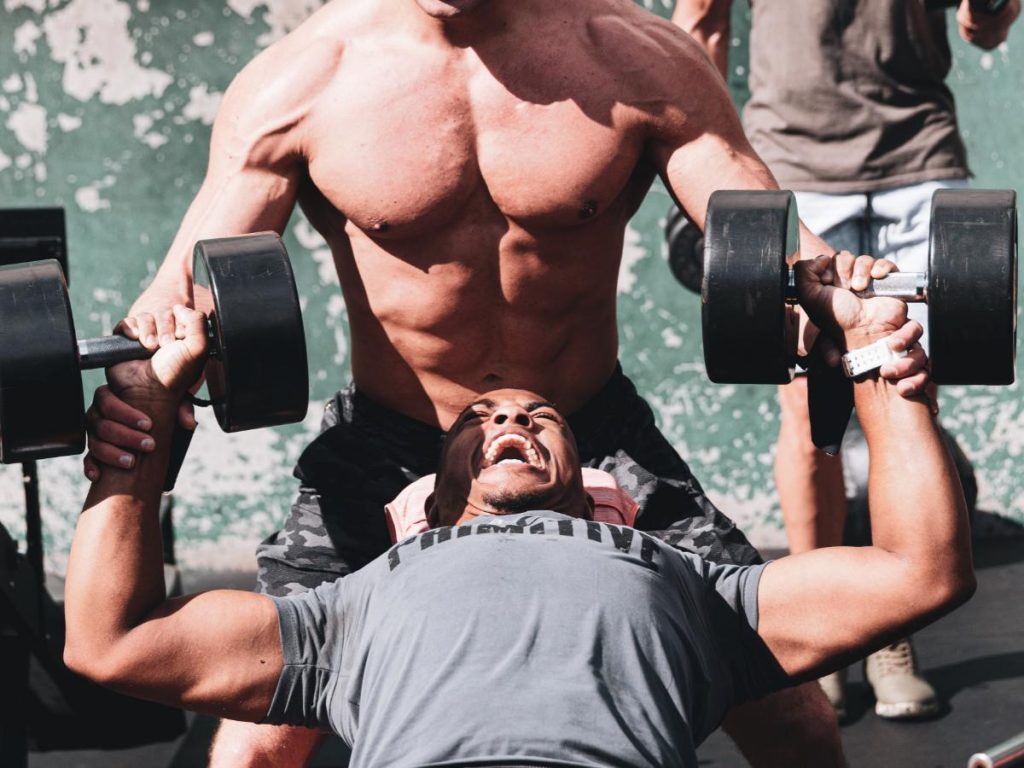
Welcome to our comprehensive guide on bodybuilding and getting started with weight training. Whether you’re a fitness enthusiast looking to build muscle, an athlete aiming to enhance performance, or simply someone wanting to improve their overall strength and physique, this blog post is designed to provide you with the essential knowledge and tips to begin your bodybuilding journey. From understanding the basics of bodybuilding to learning proper weightlifting techniques, we’ve got you covered. So, let’s dive in and explore the exciting world of bodybuilding!
Table of Contents
- What is Bodybuilding?
- Benefits of Bodybuilding
- Setting Your Goals
- Understanding Weight Training
- Essential Equipment for Weight Training
- Proper Weightlifting Techniques
- Designing Your Workout Routine
- Nutrition for Bodybuilding
- Rest and Recovery
- Common Mistakes to Avoid
- Staying Motivated
- Conclusion
- Frequently Asked Questions (FAQs)
What is Bodybuilding?
Definition and Overview of Bodybuilding:
Bodybuilding is a form of physical fitness and strength training that focuses on developing and sculpting the muscles through a combination of weightlifting, resistance training, and targeted exercises. It involves intense workouts and a disciplined approach to nutrition, with the goal of achieving a muscular and well-defined physique. While bodybuilding is often associated with competitive sports, many individuals also pursue it as a means of personal fitness and self-improvement.
Evolution of Bodybuilding:
The roots of bodybuilding can be traced back to ancient Greece, where physical fitness and the aesthetic appreciation of the human form were highly valued. However, modern bodybuilding as we know it today emerged in the late 19th and early 20th centuries. It gained popularity in the early 1900s with the advent of strongman competitions and the rise of athletes like Eugen Sandow, who is often referred to as the “Father of Modern Bodybuilding.”
Since then, bodybuilding has undergone significant evolution. In the mid-20th century, the sport gained mainstream attention with the emergence of iconic bodybuilders such as Arnold Schwarzenegger, Lou Ferrigno, and Franco Columbu. Their physiques inspired countless individuals to pursue bodybuilding and led to the establishment of various bodybuilding federations and competitions worldwide.
Different Categories of Bodybuilding:
Within the realm of bodybuilding, there are different categories or divisions that cater to diverse goals and preferences. These categories often differ based on factors such as muscularity, symmetry, and overall physique. Here are some of the main divisions commonly seen in bodybuilding:
Men’s Bodybuilding:
This category emphasizes muscular size, definition, and overall aesthetics. Competitors showcase their physiques through mandatory poses that highlight their muscular development and symmetry.
Women’s Bodybuilding:
Similar to men’s bodybuilding, this division focuses on muscularity, shape, and overall balance in the female physique. It emphasizes well-defined muscles while maintaining femininity and grace.
Classic Physique:
This category pays homage to the physiques of the golden era of bodybuilding. It combines elements of both men’s and women’s bodybuilding, emphasizing symmetry, proportion, and a balanced muscular development reminiscent of the classical bodybuilding era.
Physique:
This division places emphasis on an athletic, muscular appearance with less extreme levels of muscularity compared to bodybuilding. Competitors in this category showcase their physique through a series of quarter turns and mandatory poses.
Bikini:
The bikini division is focused on a more toned and athletic appearance rather than extreme muscularity. Competitors exhibit a balanced physique with a focus on overall aesthetics, including muscle tone, symmetry, and stage presence.
Figure:
The figure division combines elements of both bodybuilding and fitness. It emphasizes muscularity and symmetry while maintaining a feminine physique. Competitors showcase their physique through mandatory poses and quarter turns.
It’s important to note that these categories may vary slightly depending on the bodybuilding federation or organization. Each category has its own judging criteria and requirements, allowing individuals to choose the division that aligns with their personal goals and aspirations within the realm of bodybuilding.
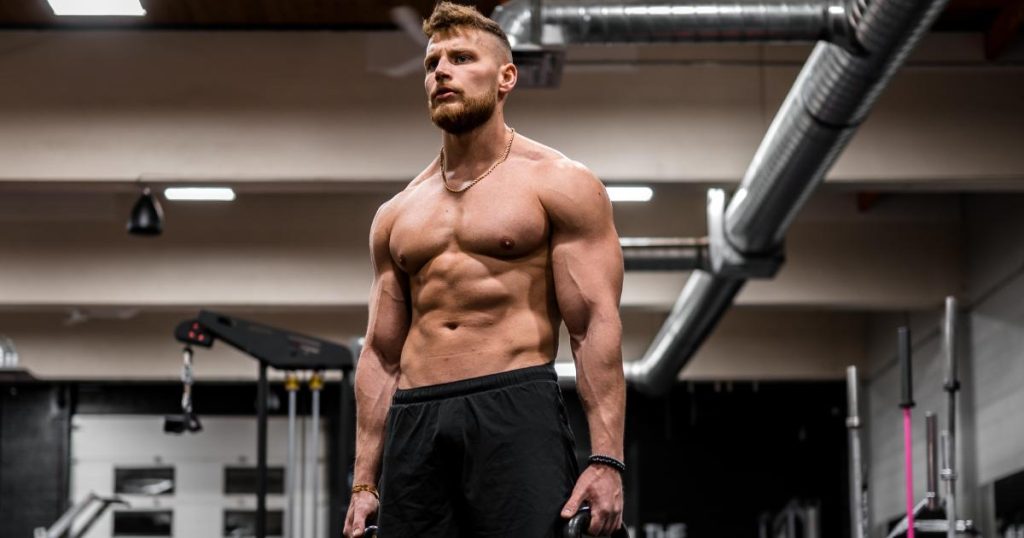
Benefits of Bodybuilding
Engaging in bodybuilding and incorporating weight training into your fitness routine can bring about numerous benefits that go beyond the physical appearance of a well-toned physique. Let’s explore some of the key advantages of bodybuilding:
Increased Muscle Mass and Strength:
One of the primary goals of bodybuilding is to increase muscle mass and strength. By engaging in regular weightlifting and resistance training exercises, the muscles undergo progressive overload, leading to muscle hypertrophy. Over time, this results in noticeable gains in muscle size and enhanced strength. Building lean muscle mass not only contributes to a more defined physique but also improves overall functional strength and performance in daily activities.
Improved Physical Performance:
Bodybuilding exercises not only increase muscle mass but also enhance physical performance in various activities and sports. The strength and power developed through weight training can translate into improved performance in sports such as football, basketball, and tennis, or even recreational activities like hiking or cycling. Stronger muscles and improved endurance allow for better efficiency and reduced risk of injury during physical exertion.
Enhanced Metabolism and Fat Burning:
Engaging in bodybuilding and weight training helps to boost your metabolism, which is the rate at which your body burns calories. As you build lean muscle mass, your body requires more energy to maintain and support those muscles. This increased metabolic rate helps in burning calories not only during your workouts but also throughout the day, even when at rest. This metabolic boost can aid in weight management and fat loss, making bodybuilding a valuable tool in achieving a healthier body composition.
Boosted Confidence and Self-Esteem:
Embarking on a bodybuilding journey and witnessing your physical transformation can have a significant impact on your confidence and self-esteem. As you make progress in your training, overcome challenges, and see your body becoming stronger and more sculpted, you develop a sense of achievement and pride in your accomplishments. This newfound confidence often extends beyond the gym, positively influencing various aspects of your life, including personal relationships, work performance, and overall self-image.
Overall Health and Well-being:
Bodybuilding is not just about external aesthetics; it promotes overall health and well-being. Regular exercise, such as weightlifting and resistance training, has been linked to numerous health benefits. It helps in reducing the risk of chronic conditions like heart disease, osteoporosis, and type 2 diabetes. Bodybuilding also improves joint stability, bone density, and flexibility, leading to better posture and a reduced risk of injuries. Additionally, physical activity releases endorphins, known as the “feel-good” hormones, which can help alleviate stress, anxiety, and symptoms of depression, contributing to improved mental well-being.
Incorporating bodybuilding and weight training into your fitness routine can bring about a multitude of benefits. Beyond the physical changes, the sense of accomplishment, increased confidence, and overall improvement in health and well-being make bodybuilding a rewarding and empowering endeavor. Remember, as with any physical activity, it’s important to start gradually, seek proper guidance, and listen to your body to ensure a safe and effective journey towards achieving your bodybuilding goals.

Setting Your Goals
Setting clear goals is crucial when embarking on a bodybuilding journey. By defining your objectives and establishing a roadmap, you can stay focused, motivated, and track your progress effectively. Let’s delve into the key aspects of goal setting in bodybuilding:
Identifying Your Personal Objectives:
Before diving into weight training and bodybuilding, take the time to identify your personal objectives. What do you hope to achieve through bodybuilding? Is it to build muscle mass, improve strength, enhance athletic performance, or transform your physique? Understanding your motivations and desired outcomes will provide clarity and direction as you progress on your journey.
Setting Realistic and Measurable Goals:
When setting goals, it’s crucial to ensure they are both realistic and measurable. Realistic goals are attainable and consider factors such as your current fitness level, lifestyle, and time commitment. Setting unattainable goals can lead to frustration and discouragement. By establishing realistic goals, you set yourself up for success and create a positive mindset.
Additionally, it’s important to make your goals measurable. Instead of setting vague goals like “get stronger” or “build muscle,” define specific parameters that can be measured objectively. For example, a measurable goal could be to increase your bench press by 10 pounds or gain one inch of muscle in your biceps. These tangible measurements allow you to track your progress and make adjustments as necessary.
Short-Term vs. Long-Term Goals:
In bodybuilding, it’s beneficial to set both short-term and long-term goals. Short-term goals are smaller, more immediate targets that contribute to your long-term objectives. These can include weekly or monthly goals such as increasing the weight lifted, adding an extra repetition to an exercise, or improving form and technique.
Long-term goals, on the other hand, encompass the broader vision you have for your bodybuilding journey. These goals may span several months or even years. Examples of long-term goals include reaching a specific body fat percentage, competing in a bodybuilding competition, or achieving a particular physique milestone.
By breaking your journey into smaller short-term goals while keeping the bigger picture in mind, you create a sense of progression and maintain motivation throughout your bodybuilding endeavor.
Tracking Your Progress:
Regularly tracking your progress is essential in bodybuilding. It allows you to assess your performance, identify areas for improvement, and celebrate your successes. There are several methods to track progress, including:
Body Measurements:
Keep track of your body measurements, such as chest, arms, waist, and hips, using a measuring tape. Regularly measuring these areas will help you gauge changes in muscle size and body composition.
Weight and Strength Progression:
Keep a record of your body weight and the weights lifted during your workouts. Tracking increases in strength and the ability to lift heavier weights over time demonstrates progress and serves as an excellent indicator of muscle development.
Progress Photos:
Take progress photos at regular intervals, such as once a month or every few weeks. Comparing these photos side by side can visually showcase the changes in your physique that might not be immediately apparent day-to-day.
Workout Logs:
Maintain a workout log where you record your exercises, sets, reps, and weights used during each training session. This log enables you to track your performance, identify patterns, and make informed adjustments to your workout routine.
By implementing these tracking methods consistently, you gain valuable insights into your progress, which helps you stay motivated and make informed decisions along your bodybuilding journey.
Remember, goal setting in bodybuilding is a dynamic process. As you achieve your goals, you may need to recalibrate and set new targets to continue progressing. Embrace the journey, remain adaptable, and enjoy the sense of accomplishment that comes with setting and achieving your bodybuilding goals.
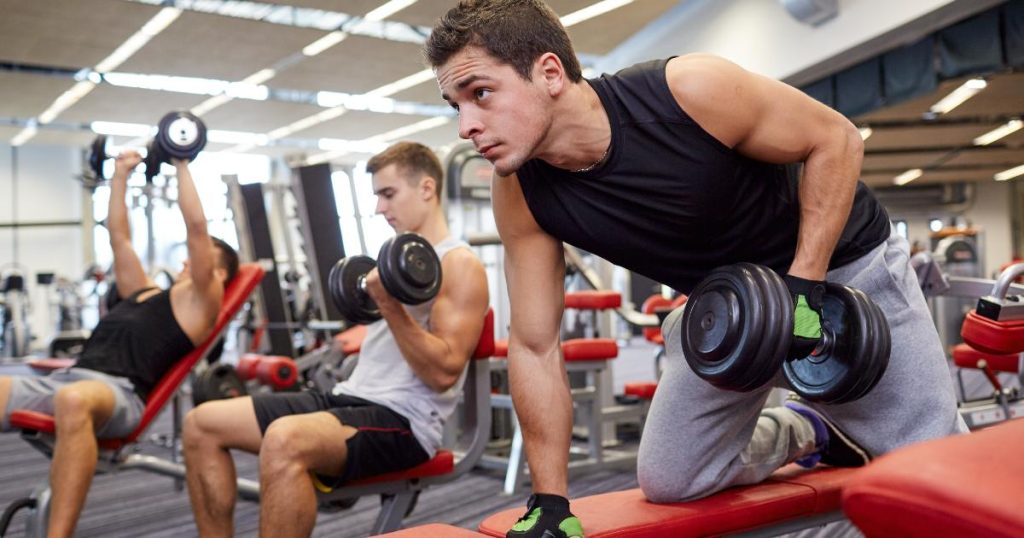
Understanding Weight Training
Weight training is a fundamental component of bodybuilding, playing a pivotal role in building muscle, improving strength, and achieving the desired physique. Let’s explore the key aspects of weight training and its significance in bodybuilding:
Importance of Weight Training in Bodybuilding:
Weight training is essential in bodybuilding due to its ability to stimulate muscle growth and adaptation. By subjecting the muscles to resistance, weight training induces microtears in the muscle fibers. In response to this stimulus, the body initiates a repair process, leading to the growth and strengthening of the muscle fibers. This process, known as hypertrophy, is crucial for building and sculpting the desired muscular physique.
Furthermore, weight training promotes an increase in the production of anabolic hormones such as testosterone, which further facilitates muscle growth. It also enhances bone density, joint stability, and overall functional strength, making weight training beneficial for both aesthetics and overall physical performance.
How Weight Training Builds Muscle:
Weight training builds muscle through a mechanism called progressive overload. When you lift weights, your muscles adapt to the stress imposed on them by increasing in size and strength. The principle of progressive overload involves gradually increasing the intensity, volume, or complexity of your workouts over time to continually challenge the muscles.
Through weight training, the muscle fibers experience tension, causing them to break down at the microscopic level. As the body repairs these microtears, it rebuilds the muscle fibers to be stronger and more resilient. This adaptive response results in muscle hypertrophy and increased muscle protein synthesis, leading to muscle growth and development.
Different Types of Weightlifting Exercises:
Weightlifting exercises can be categorized into compound exercises and isolation exercises. Compound exercises involve multiple muscle groups and joints, providing comprehensive stimulation and promoting overall strength and coordination. Examples of compound exercises include squats, deadlifts, bench presses, and overhead presses.
Isolation exercises, on the other hand, target specific muscle groups and allow for a more targeted approach to muscle development and refinement. Examples of isolation exercises include bicep curls, tricep extensions, leg extensions, and lateral raises. Incorporating a combination of compound and isolation exercises in your training routine ensures comprehensive muscle development.
Repetitions and Sets:
Repetitions (reps) and sets are important considerations in weight training. Repetitions refer to the number of times you perform a specific exercise, while sets refer to a group of repetitions performed consecutively with a brief rest period in between.
The ideal number of repetitions and sets can vary depending on your goals and training phase. For muscle hypertrophy and growth, a common approach is to perform 8-12 repetitions per set. This range provides an optimal balance between lifting moderate to heavy weights and achieving muscular fatigue. However, different rep ranges can be employed to target specific goals, such as strength development (lower reps with higher weights) or muscular endurance (higher reps with lower weights).
Sets are typically performed in multiple rounds to accumulate the desired volume and intensity. Beginners often start with 2-3 sets per exercise and gradually progress to 3-5 sets as they become more experienced. Rest periods between sets can range from 30 seconds to 2 minutes, depending on the training goals and the intensity of the exercise.
By incorporating an appropriate balance of repetitions and sets into your weight training routine, you can optimize muscle growth, strength gains, and overall progress in your bodybuilding journey.
Understanding weight training and its significance in bodybuilding is essential for achieving the desired results. By utilizing progressive overload, incorporating a variety of weightlifting exercises, and strategically programming repetitions and sets, you can stimulate muscle growth, enhance strength, and sculpt the physique you desire. Remember to maintain proper form, gradually progress, and listen to your body to ensure safe and effective weight training sessions.
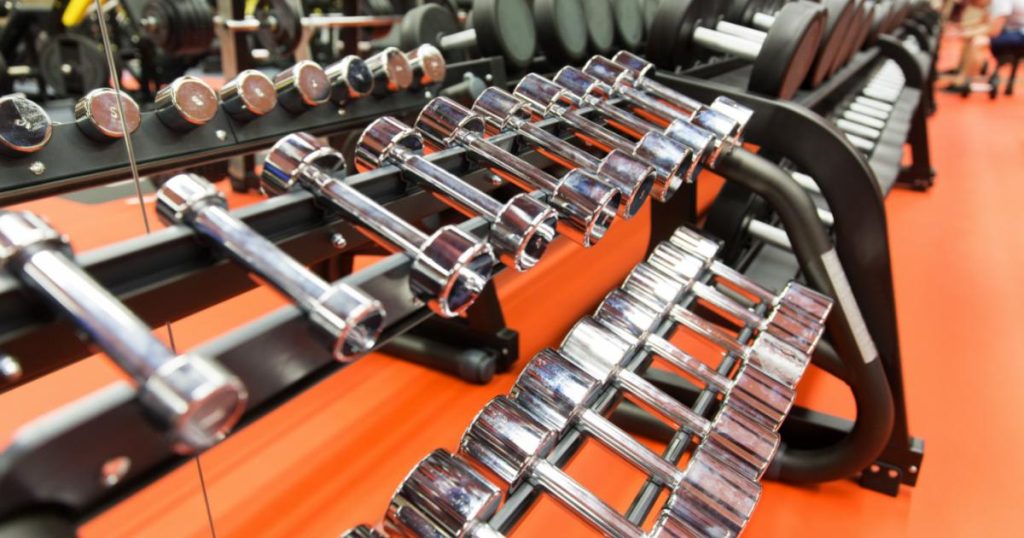
Essential Equipment for Weight Training
When it comes to weight training, having the right equipment is crucial for effective and safe workouts. Let’s explore the essential equipment you need to consider for your weight training sessions:
Choosing the Right Equipment for Your Needs:
Selecting the right equipment for weight training depends on several factors, including your goals, budget, available space, and personal preferences. Here are some considerations to keep in mind when choosing your equipment:
Free Weights vs. Machines:
Free weights, such as dumbbells and barbells, provide a wide range of exercises and engage stabilizer muscles for improved functional strength. On the other hand, weight machines offer stability and targeted muscle isolation, making them suitable for beginners or individuals recovering from injuries. Consider whether you prefer the versatility of free weights or the convenience of weight machines.
Home Gym vs. Commercial Gym:
If you plan to work out at home, investing in essential equipment like dumbbells, a barbell with weight plates, and a bench can provide a solid foundation. Alternatively, if you have access to a commercial gym, you can utilize a wide range of equipment, including weight machines, cable pulley systems, and additional accessories.
Space and Budget:
Consider the space you have available for your weight training equipment. If you have limited space, adjustable dumbbells or resistance bands can be more practical options. Additionally, assess your budget and prioritize equipment that aligns with your financial resources.
Dumbbells, Barbells, and Weight Machines:
Dumbbells and barbells are essential tools for weight training due to their versatility and effectiveness in engaging multiple muscle groups. Dumbbells allow for a wide range of exercises, from bicep curls and shoulder presses to lunges and chest presses. Barbells are typically used for compound exercises like squats, deadlifts, bench presses, and rows. Both dumbbells and barbells can be adjusted by adding or removing weight plates, allowing for progressive overload and customization.
Weight machines, found in commercial gyms or home gyms, provide guided movement patterns and often have adjustable resistance. These machines target specific muscle groups and provide stability during exercises, making them beneficial for beginners or individuals with specific rehabilitation needs. Common weight machines include leg presses, lat pulldowns, chest presses, and leg extensions.
Weightlifting Accessories and Safety Gear:
In addition to the primary weight training equipment, certain accessories, and safety gear can enhance your workout experience and ensure safety:
Resistance Bands:
Resistance bands provide additional resistance during exercises and can be used for both upper and lower-body workouts. They are versatile, portable, and suitable for individuals of all fitness levels.
Lifting Straps:
Lifting straps can be beneficial for exercises that involve heavy gripping, such as deadlifts or rows. They provide added grip support, reducing strain on the forearms and allowing you to focus more on the targeted muscle groups.
Weightlifting Belt:
A weightlifting belt provides support to the lower back and core during heavy lifts, such as squats and deadlifts. It helps maintain proper form and stability, reducing the risk of injury.
Gloves or Chalk:
Gloves can offer grip support and prevent calluses, particularly for individuals with sensitive hands. Alternatively, chalk can enhance grip by reducing moisture and improving friction.
Safety Bars and Collars:
Safety bars, commonly found on squat racks or power racks, provide a safety mechanism to catch the barbell in case of failure during exercises like squats or bench presses. Collars are used to secure weight plates on barbells, preventing them from sliding off during exercises.
Remember, while equipment can enhance your weight training experience, proper form, technique, and safety precautions should always be prioritized. Start by learning the correct form for each exercise and gradually increase the weight as your strength and confidence grow.
Choosing the right equipment for weight training is essential to support your fitness goals and ensure effective and safe workouts. Whether you opt for free weights like dumbbells and barbells, weight machines, or a combination of both, consider your preferences, space availability, and budget. Additionally, incorporating weightlifting accessories like resistance bands, lifting straps, weightlifting belts, gloves or chalk, and safety bars or collars can enhance your performance, grip, and overall safety during weight training sessions.
Remember, the most important aspect of weight training is consistency and proper execution of exercises. Whether you train at home or in a commercial gym, prioritize using equipment that aligns with your goals and provides you with a comfortable and efficient training experience. Focus on quality movements, gradually progress your weights, and always prioritize your safety to maximize the benefits of weight training and achieve your desired bodybuilding results.
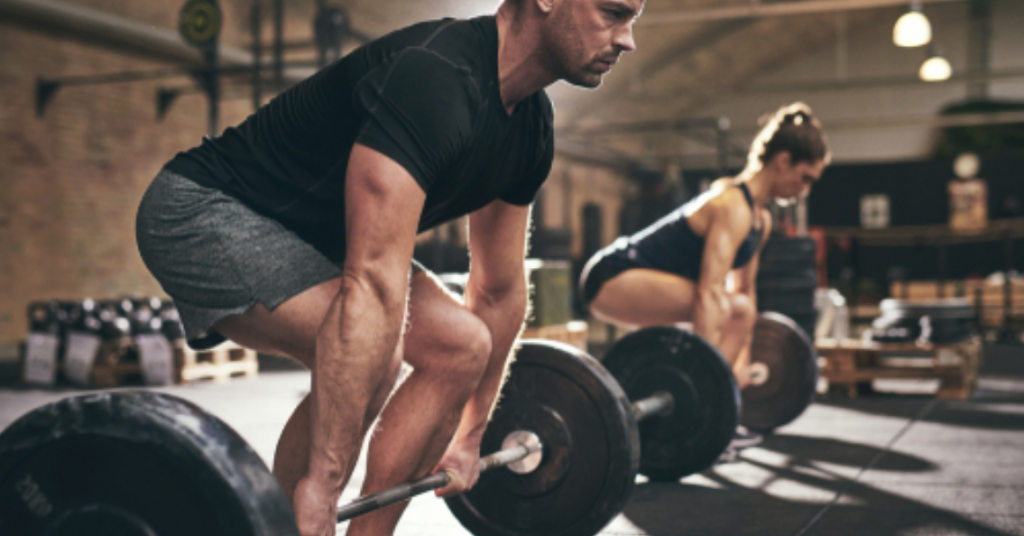
Proper Weightlifting Techniques
Maintaining proper form and technique is essential in weightlifting to maximize results, prevent injuries, and ensure efficient muscle engagement. Let’s explore the key aspects of proper weightlifting techniques:
Maintaining Proper Form and Technique:
Proper form and technique are the foundation of effective weightlifting. Here are some key principles to keep in mind:
Posture and Alignment:
Maintain a neutral spine, engage your core, and keep your shoulders back and down. This alignment helps distribute the load evenly and minimizes the risk of injury.
Range of Motion:
Perform exercises through a full range of motion, allowing the muscle to stretch and contract fully. Avoid excessive bouncing or using momentum to lift weights, as this can compromise form and reduce the effectiveness of the exercise.
Control and Stability:
Focus on controlled movements throughout the exercise, emphasizing the target muscle group. Avoid jerking or swinging motions, as they can place unnecessary stress on joints and increase the risk of injury.
Joint Positioning:
Pay attention to joint positioning and avoid extreme angles that may strain the joints. Maintain proper joint alignment throughout the movement to ensure optimal muscle activation and reduce the risk of joint-related issues.
Correct Breathing Techniques:
Proper breathing techniques play a significant role in weightlifting. Here’s a general guideline:
Exhale during Exertion:
When lifting the weight or exerting force, exhale. This helps stabilize the core, maintain proper form, and enhance power output.
Inhale during the Eccentric Phase:
During the lowering or lengthening phase of an exercise, inhale. This helps oxygenate the muscles, maintain stability, and prepare for the next repetition.
Avoid Breath Holding:
Avoid holding your breath during weightlifting, as it can increase blood pressure and reduce oxygen supply to the muscles. Focus on maintaining a rhythmic breathing pattern throughout each exercise.
Gradually Increasing Weight and Intensity:
To promote progress and challenge your muscles, gradually increase the weight and intensity of your workouts. This principle is known as progressive overload. Here’s how to apply it effectively:
Start with Manageable Weights:
Begin with weights that allow you to maintain proper form and complete the desired number of repetitions with control. This establishes a solid foundation and reduces the risk of injury.
Incremental Increases:
As your strength and technique improve, gradually increase the weights. Aim for small, incremental weight increases (e.g., 5-10% at a time) to continue challenging your muscles without compromising form.
Varying Repetition Ranges:
To stimulate muscle growth and strength gains, incorporate different repetition ranges into your training. This includes performing higher reps with lighter weights to focus on muscular endurance, moderate reps for muscle hypertrophy, and lower reps with heavier weights to enhance strength.
Seeking Professional Guidance:
If you’re new to weightlifting or unsure about proper techniques, seeking professional guidance can be immensely beneficial. Certified personal trainers or strength coaches can provide personalized instruction, assess your form, and design a training program tailored to your goals and abilities. They can also help you progress safely and avoid common mistakes that may hinder your progress or lead to injuries.
Remember, weightlifting is a skill that takes time to develop. Prioritize maintaining proper form and technique in all exercises, focus on controlled movements, and breathe properly. Gradually increase the weight and intensity to continue challenging your muscles. If in doubt, seek professional guidance to ensure you’re performing exercises correctly and optimizing your weightlifting experience. By doing so, you’ll maximize the benefits of weightlifting, minimize the risk of injury, and progress effectively toward your bodybuilding goals.
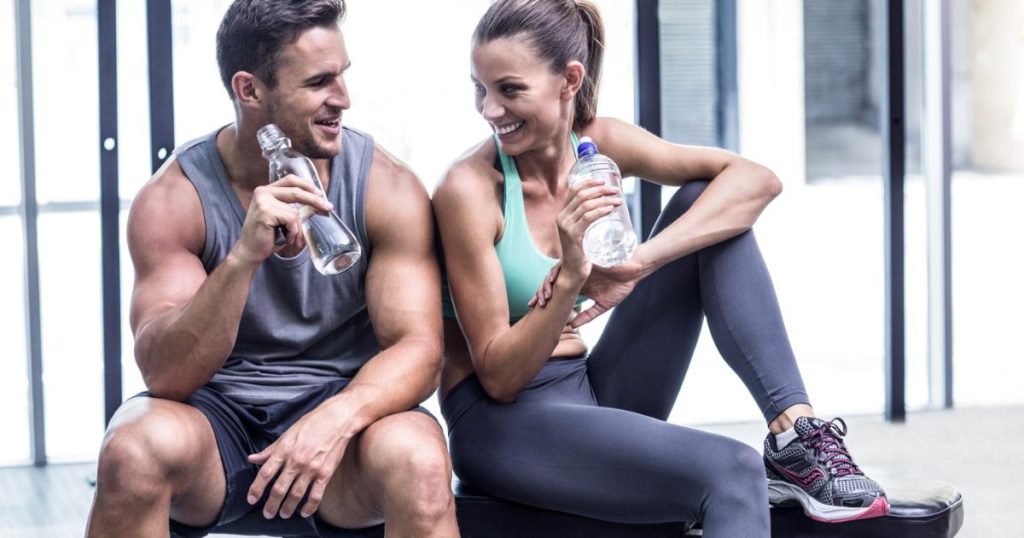
Designing Your Workout Routine
Designing an effective workout routine is essential for optimizing your bodybuilding progress and achieving your fitness goals. Let’s explore the key aspects of designing a workout routine:
Creating a Balanced Workout Plan:
A balanced workout plan ensures that all major muscle groups are targeted, promoting overall strength and muscle development. Consider the following guidelines when creating your workout plan:
Muscle Group Distribution:
Include exercises that target all major muscle groups, such as chest, back, shoulders, legs, arms, and core. Distribute your workouts throughout the week to allow adequate rest and recovery for each muscle group.
Exercise Selection:
Choose a variety of compound and isolation exercises to engage different muscles and provide well-rounded stimulation. Compound exercises like squats, deadlifts, bench presses, and rows involve multiple muscle groups, while isolation exercises like bicep curls and leg extensions target specific muscles.
Training Frequency:
Determine how many days per week you can commit to weightlifting. Beginners may start with 2-3 sessions per week, gradually progressing to 4-6 sessions as they become more experienced. Avoid consecutive days of intense training for the same muscle group to allow ample recovery time.
Splitting Your Training Sessions:
Splitting your training sessions involves dividing your workouts into different muscle groups or training focuses. Here are common types of training splits:
Full-Body:
In a full-body split, you train all major muscle groups in a single session. This type of split is suitable for beginners or individuals with limited time for workouts.
Upper/Lower Body:
This split separates training days into upper-body exercises and lower-body exercises. It allows for increased training volume and intensity for each specific muscle group.
Push/Pull/Legs:
This split divides workouts into push exercises (e.g., chest, shoulders, triceps), pull exercises (e.g., back, biceps), and leg exercises. It provides a balanced distribution of training volume and allows for focused work on each muscle group.
Body Part:
This split targets specific muscle groups on different days. For example, you may dedicate one day to the chest and triceps, another day to the back and biceps, and so on. This split allows for more targeted training of individual muscle groups.
Incorporating Cardiovascular Exercise:
In addition to weightlifting, incorporating cardiovascular exercise is beneficial for overall health, cardiovascular fitness, and maintaining a lean physique. Consider these points when incorporating cardiovascular exercise into your routine:
Frequency and Duration:
Aim for at least 150 minutes of moderate-intensity cardio or 75 minutes of vigorous-intensity cardio per week, as recommended by the American Heart Association. Split these sessions throughout the week based on your preferences and schedule.
Types of Cardio:
Choose cardiovascular activities that you enjoy and can sustain consistently. Options include running, cycling, swimming, brisk walking, HIIT (High-Intensity Interval Training), or participating in sports.
Timing:
Perform cardio exercises on separate days from weightlifting or at different times of the day to avoid excessive fatigue and optimize recovery. If performing cardio immediately after weightlifting, prioritize a cool-down period to lower your heart rate gradually.
Progressive Overload and Periodization:
To ensure ongoing progress, incorporate progressive overload and periodization into your workout routine. These principles involve systematically increasing the demands on your muscles and adjusting your training variables over time. Here’s how to apply them:
Progressive Overload:
Continually challenge your muscles by gradually increasing the weights, repetitions, or sets. This progression stimulates muscle adaptation and growth. For example, if you lifted 10-pound dumbbells for 8 repetitions last week, aim to lift 12-pound dumbbells for the same number of repetitions this week.
Periodization:
Periodization refers to organizing your training into distinct phases or cycles, each with specific goals and intensities. This approach allows for optimized progress and prevents plateaus. Common periodization methods include:
Linear Periodization:
Gradually increasing intensity and decreasing volume over time to build a foundation and then focus on strength and power.
Reverse Periodization:
Starting with high-intensity, low-volume training and gradually increasing volume while decreasing intensity as you progress.
Undulating Periodization:
Alternating between different training intensities and volumes within each week or session, providing variation and challenging the muscles in different ways.
Periodization helps prevent overtraining, promotes recovery, and ensures continual adaptation to your workouts.
Designing a workout routine requires careful consideration of your goals, preferences, and available time. Aim for a balanced workout plan that targets all major muscle groups, split your training sessions strategically, incorporate cardiovascular exercise for overall health, and implement progressive overload and periodization to optimize your progress. It’s also important to listen to your body, rest when needed, and seek guidance from fitness professionals if necessary. With a well-designed workout routine, you can effectively advance your bodybuilding journey and achieve your desired results.

Nutrition for Bodybuilding
Nutrition plays a critical role in bodybuilding, providing the fuel and building blocks necessary for muscle growth, recovery, and overall performance. Let’s explore the key aspects of nutrition for bodybuilding:
Importance of Proper Nutrition:
Proper nutrition is essential for bodybuilders as it supports muscle growth, aids in recovery, and optimizes performance. Here’s why nutrition is crucial:
Muscle Growth:
Adequate nutrition provides the necessary nutrients to fuel muscle growth and repair. Consuming an appropriate balance of macronutrients and calories ensures the availability of protein, carbohydrates, and fats needed for optimal muscle synthesis.
Recovery:
Intense weightlifting sessions cause muscle damage, and proper nutrition aids in the recovery process. Nutrients such as protein, carbohydrates, and antioxidants help repair muscle tissue, replenish energy stores, and reduce inflammation.
Performance Enhancement:
Optimal nutrition supports physical performance by providing energy, enhancing endurance, and improving strength. Properly fueled muscles perform better and allow for more effective and intense workouts.
Macro and Micronutrients for Muscle Growth:
To support muscle growth, it’s important to consume an appropriate balance of macronutrients and ensure adequate intake of essential micronutrients. Here’s an overview:
Macronutrients:
Protein:
Protein is crucial for muscle repair and growth. Aim for a protein intake of around 0.7 to 1 gram per pound of body weight per day, sourced from lean meats, poultry, fish, dairy products, eggs, legumes, and plant-based protein sources like tofu and tempeh.
Carbohydrates:
Carbohydrates provide the primary fuel source for intense workouts. Complex carbohydrates such as whole grains, fruits, vegetables, and legumes should make up the majority of your carbohydrate intake to provide sustained energy.
Fats:
Healthy fats play a role in hormone production and provide essential fatty acids. Include sources like avocados, nuts, seeds, fatty fish, and oils in moderation.
Micronutrients:
Vitamins and Minerals:
Ensure a varied diet rich in fruits, vegetables, whole grains, lean proteins, and dairy or dairy alternatives to obtain essential vitamins and minerals. These micronutrients support overall health, immune function, and recovery.
Caloric Surplus vs. Deficit:
Caloric intake is a crucial consideration in bodybuilding, as it determines whether you are in a caloric surplus (consuming more calories than you burn) or a caloric deficit (consuming fewer calories than you burn). The approach you choose depends on your specific goals:
Caloric Surplus:
To build muscle, a caloric surplus is often required. This means consuming slightly more calories than you burn, typically around 250-500 calories above maintenance. This surplus provides the extra energy and nutrients needed for muscle growth.
Caloric Deficit:
When aiming to lose body fat while preserving muscle mass, a caloric deficit is necessary. This involves consuming fewer calories than you burn, typically around 250-500 calories below maintenance. This deficit promotes fat loss while preserving muscle, provided that protein intake remains adequate.
Pre- and Post-Workout Nutrition:
Optimizing your nutrition before and after workouts can enhance performance, promote muscle growth, and facilitate recovery. Consider the following guidelines:
Pre-Workout Nutrition:
Consume a balanced meal or snack containing carbohydrates and protein about 1-2 hours before your workout. This provides a source of energy and amino acids for muscle performance and repair. Opt for easily digestible foods like a banana with nut butter or a protein shake with some fruit.
Post-Workout Nutrition:
Consume a combination of protein and carbohydrates within 1-2 hours after your workout. This helps replenish glycogen stores, repair muscle tissue, and promote recovery. Examples of post-workout meals or snacks include a chicken breast with sweet potatoes and vegetables, or a protein shake with a banana.
In addition to pre- and post-workout nutrition, it’s important to maintain a well-balanced diet throughout the day. Consider the following general tips:
Hydration:
Stay properly hydrated by drinking water throughout the day. Water supports digestion, nutrient absorption, and overall cellular function.
Meal Frequency:
Aim to consume 4-6 smaller meals or snacks throughout the day to maintain a steady supply of nutrients. This helps optimize energy levels and supports muscle recovery.
Nutrient Timing:
While overall daily nutrition is important, timing your meals and snacks strategically can further optimize performance and recovery. Distribute protein intake evenly throughout the day to support muscle protein synthesis. Additionally, include carbohydrates before and after workouts to fuel your training and replenish glycogen stores.
Whole Foods vs. Supplements:
While supplements can be convenient, prioritize whole food sources as the foundation of your nutrition. Whole foods provide a broader range of essential nutrients and offer better satiety and overall health benefits. Supplements should complement a well-balanced diet, if needed.
Individualization:
Keep in mind that nutritional needs may vary among individuals based on factors such as body composition, metabolism, training intensity, and personal preferences. Experiment with different approaches and adjust your nutrition based on how your body responds.
Remember, proper nutrition is a key pillar of bodybuilding. Ensure you consume an appropriate balance of macronutrients and include essential micronutrients in your diet. Consider your specific goals when determining whether to maintain a caloric surplus or deficit. Optimize pre- and post-workout nutrition, hydrate adequately, and focus on whole foods as the foundation of your nutrition. By fueling your body properly, you provide the necessary building blocks for muscle growth, enhance performance, and support your overall bodybuilding journey.

Rest and Recovery
Rest and recovery are integral components of a successful bodybuilding journey. They allow your body to repair, rebuild, and adapt to the stress of weightlifting. Let’s explore the key aspects of rest and recovery in bodybuilding:
Understanding the Importance of Rest:
Rest is not just a period of inactivity; it is a crucial phase where your body undergoes essential processes for growth and repair. Here’s why rest is important:
Muscle Repair and Growth:
During rest periods, your body repairs and rebuilds the muscle fibers that were broken down during weightlifting. This repair process, known as muscle protein synthesis, leads to muscle growth and strength gains.
Energy Restoration:
Rest allows your body to replenish glycogen stores, which are a primary source of energy during workouts. Adequate glycogen levels ensure optimal performance and help prevent fatigue.
Injury Prevention:
Rest periods help reduce the risk of overuse injuries caused by continuous stress on the muscles, tendons, and joints. Giving your body time to recover allows for proper healing and minimizes the likelihood of injuries.
Mental and Emotional Well-being:
Rest is not only important for physical recovery but also for mental and emotional rejuvenation. Taking time to relax and unwind can help reduce stress levels, improve focus, and enhance overall well-being.
Adequate Sleep and its Impact on Muscle Growth:
Sleep plays a vital role in muscle growth, recovery, and overall health. Here’s how sleep impacts your bodybuilding journey:
Muscle Repair and Growth:
During deep sleep, the body releases growth hormone, which is crucial for muscle repair and growth. Quality sleep supports the production of this hormone, facilitating optimal muscle recovery and adaptation.
Hormonal Balance:
Sleep deprivation can disrupt the balance of hormones in your body, including those involved in muscle growth and metabolism. Lack of sleep may increase levels of cortisol, a stress hormone that can hinder muscle growth and promote muscle breakdown.
Cognitive Function and Performance:
Sufficient sleep is essential for cognitive function, memory consolidation, and overall mental clarity. It enhances focus, reaction time, and decision-making abilities, which are crucial for effective weightlifting sessions.
Recovery from Intense Training:
Sleep is a key component of the recovery process, allowing your body to repair damaged tissues, reduce inflammation, and replenish energy stores. Quality sleep aids in post-workout recovery and prepares you for future training sessions.
To optimize sleep quality, establish a consistent sleep schedule, create a sleep-friendly environment, and practice good sleep hygiene habits such as avoiding electronic screens before bed, maintaining a cool and dark sleeping space, and practicing relaxation techniques.
Active Recovery Techniques:
Active recovery involves engaging in low-intensity activities that promote blood flow, reduce muscle soreness, and aid in recovery. Here are some effective active recovery techniques:
Light Cardiovascular Exercise:
Engage in low-impact activities like walking, swimming, or cycling to increase blood flow and promote the removal of metabolic waste products from the muscles.
Foam Rolling and Stretching:
Use a foam roller or engage in stretching exercises to release muscle tension, improve flexibility, and enhance recovery. Focus on areas that feel tight or sore from weightlifting.
Yoga or Pilates:
Incorporate yoga or Pilates sessions into your routine to improve mobility, enhance body awareness, and promote relaxation. These practices combine gentle movements with deep breathing, aiding in both physical and mental recovery.
Active Rest Days:
Dedicate specific days to active rest, where you engage in activities unrelated to weightlifting. This can include recreational sports, hiking, or engaging in hobbies that promote movement without excessive strain.
Listening to Your Body:
One of the most important aspects of rest and recovery is listening to your body’s signals and adjusting your training accordingly. Here are some considerations:
Muscle Soreness:
Pay attention to muscle soreness as an indicator of the need for rest. Mild soreness is normal, but excessive or prolonged soreness may indicate that your muscles require more time to recover.
Fatigue and Energy Levels:
Monitor your energy levels throughout the day. If you consistently feel fatigued or lack energy during your workouts, it may be a sign that you need more rest and recovery.
Sleep Quality:
Assess the quality of your sleep. If you consistently struggle with disrupted or insufficient sleep, it may be beneficial to prioritize improving your sleep habits to support optimal recovery.
Performance Plateaus:
If you experience a plateau in performance or notice a lack of progress despite consistent training, it may be a sign that your body needs a break to recover and reset.
Mental and Emotional Well-being:
Pay attention to your mental and emotional state. If you feel excessively stressed, anxious, or burnt out, it’s important to prioritize rest and relaxation to support your overall well-being.
Remember, rest and recovery are just as important as the actual training. Strive to strike a balance between training intensity and sufficient rest to optimize your bodybuilding progress. Allow yourself adequate time to recover, listen to your body’s cues, prioritize quality sleep, and incorporate active recovery techniques. By honoring your body’s need for rest, you’ll promote muscle growth, reduce the risk of injuries, and achieve better overall results in your bodybuilding journey.

Common Mistakes to Avoid
When embarking on a bodybuilding journey, it’s important to be aware of common mistakes that can hinder your progress and potentially lead to setbacks. By avoiding these pitfalls, you can maximize your results and maintain a safe and sustainable approach to bodybuilding. Let’s explore some common mistakes to avoid:
Overtraining and Injury Risks:
One of the most prevalent mistakes among bodybuilders is overtraining, which occurs when you don’t allow your body enough time to recover between workouts. Overtraining can lead to fatigue, decreased performance, and an increased risk of injury. Here’s how to avoid it:
Implement Rest Days:
Schedule regular rest days within your training program to allow your muscles, joints, and nervous system adequate time to recover and repair.
Listen to Your Body:
Pay attention to signs of fatigue, excessive soreness, or decreased motivation. If you’re feeling excessively tired or experiencing persistent pain, it may be a sign that you need more rest.
Vary Your Intensity:
Avoid training at a high intensity every day. Incorporate lighter training sessions, active recovery days, or deload weeks to give your body a chance to recharge.
Neglecting Proper Form and Technique:
Using incorrect form and technique during exercises is not only ineffective but also increases the risk of injury. Here’s how to prioritize proper form:
Educate Yourself:
Learn the correct form and technique for each exercise you perform. Seek guidance from certified trainers, watch instructional videos, or consider working with a professional to ensure you’re performing exercises correctly.
Start with Lighter Weights:
Begin with lighter weights to master the proper form before progressing to heavier loads. This allows you to establish a solid foundation of movement patterns and muscle activation.
Focus on Mind-Muscle Connection:
Concentrate on the muscles you are targeting during each exercise. This will help you maintain proper form and ensure that you’re effectively engaging the intended muscle group.
Focusing Solely on One Muscle Group:
While it’s natural to have areas of focus or specific muscle groups you want to develop, neglecting other muscle groups can lead to muscular imbalances and potential injuries. Here’s how to avoid this mistake:
Embrace Full-Body Training:
Incorporate exercises that target multiple muscle groups in your training routine. This ensures balanced muscle development and overall strength.
Follow a Balanced Training Program:
Design a workout routine that includes exercises for all major muscle groups, allowing each area to receive adequate attention and stimulation.
Poor Nutrition and Hydration Habits:
Proper nutrition and hydration are vital for supporting your bodybuilding goals and optimizing your performance. Avoid these common nutrition and hydration mistakes:
Insufficient Protein Intake:
Protein is crucial for muscle repair and growth. Ensure you’re consuming enough protein from quality sources to support your bodybuilding efforts.
Neglecting Micronutrients:
While macronutrients (protein, carbohydrates, and fats) are important, don’t overlook the importance of micronutrients from fruits, vegetables, and whole grains. These provide essential vitamins and minerals necessary for overall health and well-being.
Inadequate Hydration:
Dehydration can negatively impact performance, recovery, and overall health. Stay properly hydrated by drinking water throughout the day, especially during workouts.
Lack of Meal Planning:
Plan your meals in advance to ensure you’re meeting your nutritional needs. This helps avoid impulsive food choices that may not align with your bodybuilding goals.
Skipping Post-Workout Nutrition:
Post-workout nutrition is crucial for replenishing glycogen stores, repairing muscle tissue, and facilitating recovery. Don’t overlook the importance of consuming a balanced meal or snack after your workouts.
By avoiding these common mistakes and adopting a balanced and mindful approach to bodybuilding, you can set yourself up for success and minimize the risk of setbacks. Prioritize adequate rest and recovery, ensuring you allow your body enough time to heal and grow stronger. Focus on maintaining proper form and technique in every exercise to maximize effectiveness and reduce the risk of injury. Avoid the temptation to solely focus on one muscle group and strive for balanced muscle development throughout your body.
Nutrition and hydration are key components of your bodybuilding journey.
Pay attention to your protein intake, ensuring you consume enough to support muscle repair and growth. Don’t overlook the importance of essential micronutrients and maintain a well-rounded diet that includes fruits, vegetables, and whole grains. Stay hydrated by drinking water regularly throughout the day to support optimal performance and recovery.
Lastly, don’t forget the significance of post-workout nutrition.
Provide your body with the necessary nutrients to replenish glycogen stores, repair muscles, and aid in recovery. By planning your meals and snacks, you can ensure you’re meeting your nutritional needs and fueling your body appropriately.
Overall, by avoiding common mistakes such as overtraining, neglecting proper form, focusing solely on one muscle group, and having poor nutrition and hydration habits, you can optimize your bodybuilding journey. Remember that progress takes time and consistency, so be patient, listen to your body, and make adjustments as needed. With a mindful and balanced approach, you can achieve your bodybuilding goals while maintaining your health and well-being.
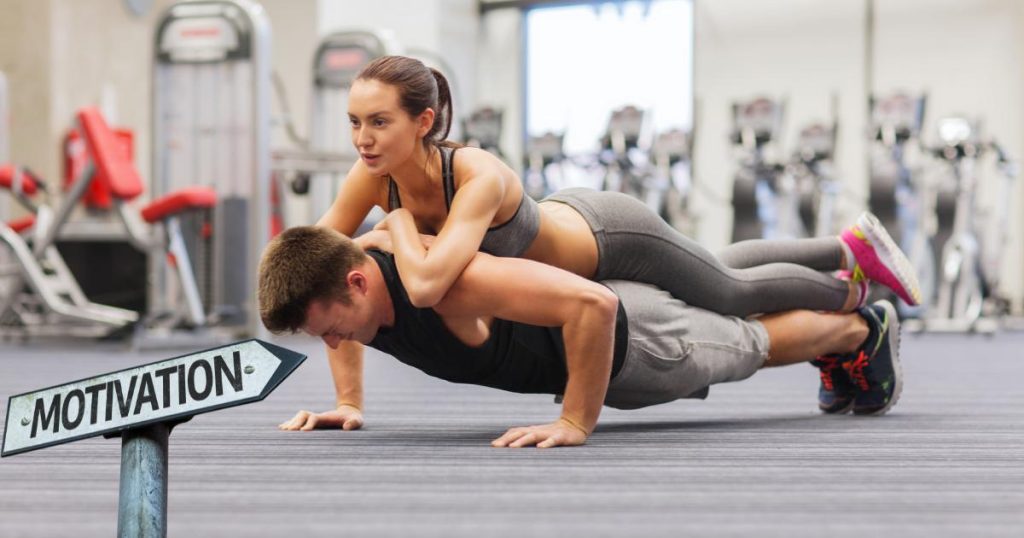
Staying Motivated
Maintaining motivation throughout your bodybuilding journey is essential to stay committed, overcome challenges, and achieve your goals. Here are some strategies to help you stay motivated:
Finding Your Source of Motivation:
Understanding what motivates you personally is key to staying dedicated to your bodybuilding journey. Consider the following factors:
Goal Clarity:
Clearly define your goals and understand why they are important to you. Whether it’s building muscle, improving performance, or enhancing your overall well-being, having a clear purpose will fuel your motivation.
Personal Values:
Connect your bodybuilding goals with your personal values. For example, if you value discipline, setting and achieving fitness milestones can align with this core value.
Intrinsic Motivation:
Cultivate internal motivation by finding joy and satisfaction in the process itself. Focus on the sense of accomplishment, the feeling of strength and vitality during workouts, and the positive impact on your overall health and well-being.
Setting Milestones and Celebrating Achievements:
Breaking down your larger goals into smaller milestones can help you maintain motivation and track your progress. Here’s how to approach milestones:
Specific and Measurable Goals:
Set specific, measurable, and attainable goals that align with your overall vision. For example, aiming to increase your squat weight by a certain amount or completing a specific number of pull-ups.
Track Your Progress:
Regularly assess your progress by tracking your workouts, strength improvements, and physical changes. This visual representation of progress can serve as a powerful motivator.
Celebrate Achievements:
Celebrate each milestone you reach, whether it’s with a small reward, sharing your achievements with friends or family, or treating yourself to something special. Celebrating milestones helps maintain a positive mindset and boosts motivation.
Joining a Fitness Community or Finding a Workout Buddy:
Surrounding yourself with like-minded individuals who share similar goals can provide valuable support and motivation. Consider these options:
Fitness Communities:
Join fitness communities, either in-person or online, where you can connect with individuals who have similar interests and goals. Participate in group activities, discussions, and challenges to stay motivated and inspired.
Workout Buddy:
Find a workout partner who shares your passion for bodybuilding. Working out with a buddy can make your sessions more enjoyable, provide accountability, and push you to work harder.
Embracing Variety in Your Workout Routine:
Variety is crucial to prevent boredom and maintain motivation. Here’s how to embrace variety in your workout routine:
Exercise Selection:
Incorporate a wide range of exercises that target different muscle groups and vary in intensity and complexity. This helps keep your workouts exciting and challenges your body in different ways.
Training Methods:
Explore different training methods, such as circuit training, high-intensity interval training (HIIT), or supersets. Experiment with different rep ranges, tempos, and rest periods to keep your workouts fresh and engaging.
Try New Activities:
Explore activities beyond weightlifting, such as yoga, martial arts, or outdoor sports. Engaging in different activities can provide a break from your regular routine while still promoting physical fitness and overall well-being.
Periodization:
Incorporate periodization into your training program by dividing it into distinct phases. This allows for variations in training intensity, volume, and focus, keeping your workouts stimulating and preventing plateaus.
Remember, staying motivated is a continuous process that requires effort and self-reflection. Find what truly inspires you, set milestones, and celebrate achievements along the way. Connect with a supportive community, whether online or offline, and consider finding a workout buddy who can join you on your fitness journey. Embrace variety in your workouts to keep them exciting and engaging. By staying motivated, you can overcome challenges, maintain consistency, and continue making progress in your bodybuilding endeavors. Ultimately, staying motivated will help you enjoy the process and reap the rewards of your hard work.
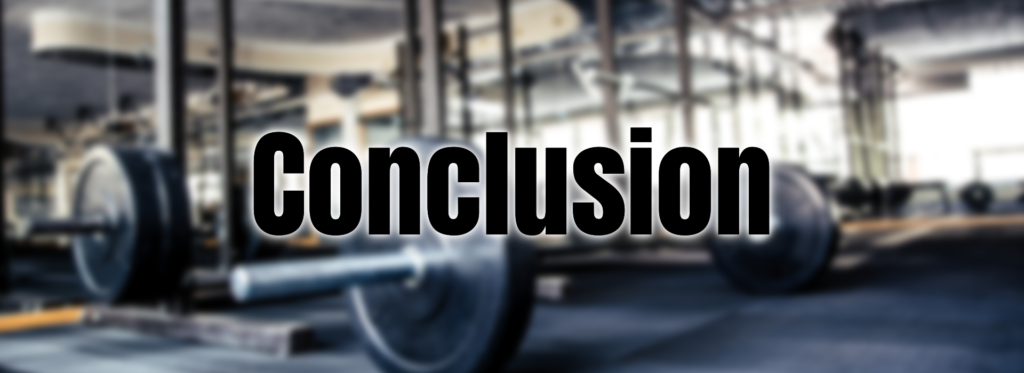
Conclusion
In conclusion, embarking on a bodybuilding journey and getting started with weight training is an exciting endeavor that can transform not only your physique but also your overall well-being. By applying the knowledge and tips shared in this comprehensive guide, you are equipped with the tools to make progress and achieve your bodybuilding goals.
Throughout this journey, it is important to maintain a sense of dedication, discipline, and patience. Rome wasn’t built in a day, and neither will your dream physique. Set realistic goals that align with your personal aspirations and values. Remember that each small milestone achieved is a step closer to your ultimate vision.
Proper weightlifting techniques are vital to ensure efficient and effective workouts. Focus on maintaining proper form, gradually increasing weight and intensity, and seeking professional guidance when needed. By prioritizing correct form and technique, you will minimize the risk of injuries and maximize the benefits of your training.
Nutrition plays a crucial role in supporting your bodybuilding efforts. Understand the importance of proper nutrition, including macronutrients and micronutrients, and strive to maintain a well-balanced diet. Fuel your body with the necessary nutrients it needs to support muscle growth, recovery, and overall performance. Don’t overlook the significance of pre- and post-workout nutrition, as they contribute to optimizing your training sessions and enhancing results.
Rest and recovery are often underestimated but are equally important in your bodybuilding journey. Allow your body enough time to rest and repair, as this is when the magic happens. Pay attention to your body’s signals, listen to its needs, and incorporate rest days into your training program. Additionally, prioritize quality sleep as it directly impacts muscle growth, recovery, and cognitive function.
Staying motivated is crucial for long-term success. Find your personal source of motivation, whether it’s a desire for self-improvement, a love for the process, or the support of a community. Set milestones along the way, track your progress, and celebrate your achievements. Consider joining a fitness community or finding a workout buddy who can provide support and accountability. Embrace variety in your workout routine to keep it engaging and enjoyable.
As you embark on your bodybuilding journey, remember that it is unique to you. Embrace the process, enjoy the challenges, and learn from every experience. The transformation you seek extends beyond physical changes—it encompasses personal growth, mental fortitude, and a sense of accomplishment. Embrace the dedication, discipline, and patience required, and you will witness the incredible results that await you.
Now, armed with this comprehensive knowledge and understanding, it’s time to take action. Commit yourself to the journey, stay consistent, and never lose sight of your goals. With the right mindset and perseverance, you have the power to sculpt your body, boost your strength, and enhance your overall well-being. Best of luck on your bodybuilding adventure!

Frequently Asked Questions (FAQs)
How long will it take to see results in bodybuilding?
The timeline for seeing results in bodybuilding varies from person to person. Factors such as genetics, training consistency, nutrition, and individual goals play a role. With dedication, discipline, and a well-structured plan, visible results can usually be seen within a few months.
Is weightlifting safe for beginners?
Yes, weightlifting can be safe for beginners when approached with proper form, technique, and appropriate progression. It is recommended to start with lighter weights and gradually increase intensity as you develop strength and confidence. Seeking guidance from a certified trainer can be beneficial.
Should I focus on cardio or weightlifting for bodybuilding?
Both cardio and weightlifting have their place in bodybuilding. While weightlifting is crucial for building muscle and strength, cardiovascular exercise contributes to overall health, endurance, and fat burning. It’s best to strike a balance by incorporating both into your workout routine.
Can women engage in bodybuilding and weight training?
Absolutely! Women can engage in bodybuilding and weight training. It’s a misconception that weightlifting will make women bulky. Strength training can help women sculpt lean muscles, increase strength, and improve overall body composition.
Do I need to take supplements for bodybuilding?
Supplements are not necessary for bodybuilding, as you can achieve your goals through a well-balanced diet. However, certain supplements, such as protein powders or creatine, can be used to complement your nutrition plan if needed. Consult a healthcare professional before starting any supplements.
How often should I train as a beginner in bodybuilding?
As a beginner, it’s recommended to start with 2-3 weightlifting sessions per week. This allows your body to adapt and recover adequately. Over time, you can gradually increase the frequency as your fitness level improves.
Can I build muscle without going to the gym?
While the gym offers access to a wide range of equipment, it’s possible to build muscle without it. Bodyweight exercises, resistance bands, and home workout routines can be effective alternatives. Consistency, progressive overload, and proper nutrition are key factors regardless of the training environment.
How important is rest and recovery in bodybuilding?
Rest and recovery are vital in bodybuilding. They allow your muscles to repair, rebuild, and grow stronger. Without adequate rest, you risk overtraining, decreased performance, and increased susceptibility to injuries. Make sure to include rest days in your training program and prioritize quality sleep.
Can bodybuilding help with weight loss?
Yes, bodybuilding can contribute to weight loss. Weight training increases muscle mass, which in turn boosts metabolism and helps burn more calories even at rest. Coupled with a balanced diet and cardiovascular exercise, bodybuilding can support weight loss goals.
Is it necessary to track macros and calories for bodybuilding?
Tracking macros and calories can be beneficial in bodybuilding, especially when it comes to achieving specific goals. It provides insight into your nutrient intake and ensures you’re consuming an appropriate balance of macronutrients for muscle growth and recovery. However, it is not necessary for everyone and depends on individual preferences and goals.
Remember, these answers serve as general guidelines and individual needs may vary. It’s always recommended to consult with a qualified fitness professional or healthcare provider for personalized advice based on your specific circumstances.
Articles of Interest
Best Testosterone Boosters of 2023 – Comprehensive Guide
Muscle Mastery: The Ultimate Guide to Bodybuilding Supplements
Best Bodybuilding Supplements That Help To Build Muscle And Shred Fat
How to Get Started with Bodybuilding: A Beginner’s Guide
The Ultimate Guide to Using Testosterone Supplements for Faster Muscle Growth
The Secret to Fast Muscle Recovery: How Testosterone Supplements Can Help





